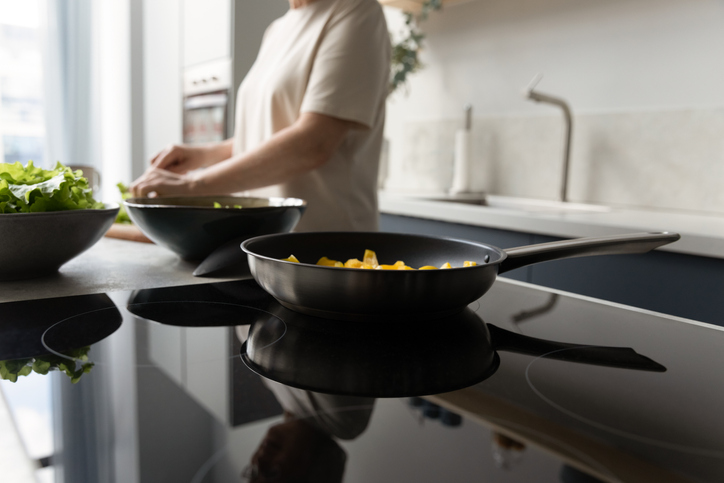Cooking Curry in Cast Iron on Induction: A Flavorful Fusion
Written By James Morgan
For barbecue enthusiasts, the idea of blending the rich, aromatic world of curry with the robust, hearty nature of cast iron cooking brings an enticing opportunity to the table. While traditionally, curry is often cooked over an open flame or on a conventional stove, utilizing an induction cooktop introduces a modern twist. This method not only maintains the intense flavors but also ensures a more controlled cooking environment. If you've ever wondered how to make the best use of your cast iron skillet or pot on an induction cooktop for curry, you're in for a treat.
When we talk about cooking curry in cast iron on induction, we're exploring a technique that offers several advantages. The durable nature of cast iron allows for even heat distribution, ensuring that every spice and ingredient melds together perfectly. Moreover, the precision of induction cooking helps in maintaining the right temperature, preventing the curry from burning or sticking, which can often happen with other heat sources.

Why Choose Cast Iron for Curry?
For those who love the smoky flavors of barbecue, using cast iron for making curry can be a game-changer. The material's ability to retain heat makes it perfect for slow-cooking dishes that require deep flavor infusion. Cast iron skillets and pots are seasoned over time, which means they add a unique taste to the curry that is hard to replicate with other cookware.
Additionally, cast iron cookware is incredibly versatile. It can transition from stove to oven, which is ideal for recipes that require a finishing bake. Not to mention, they are virtually indestructible, making them a valuable addition to any barbecue enthusiast's kitchen arsenal.
Induction Cooking: A Perfect Match
The precision and efficiency of induction cooktops complement the properties of cast iron beautifully. Induction cooking uses electromagnetic energy to heat the cookware directly, rather than the surrounding air, leading to faster and more energy-efficient cooking. This method is not only quick but also allows for precise temperature control, a crucial factor in the delicate process of making curry.
For those worried about compatibility, rest assured that most cast iron cookware works seamlessly with induction cooktops. The magnetic properties of cast iron make it a perfect match for this modern cooking technology. If you're concerned about scratching your cooktop, you can refer to guides on cast iron scratching induction glass for tips on how to prevent any damage.
Preparing Your Ingredients
Before diving into the cooking process, preparing your ingredients is essential. A well-made curry is all about the blend of spices and fresh components. Common ingredients include onions, garlic, ginger, tomatoes, and a variety of spices such as turmeric, cumin, and coriander. For protein, chicken, beef, or lentils are popular choices.
Ensure your cast iron cookware is properly seasoned; this enhances the flavors and prevents sticking. If you're new to seasoning, check out tips on using cast iron over any heat source to get started.
Cooking Process
Once your ingredients are prepped, it's time to start cooking. Begin by heating your cast iron skillet on the induction cooktop. Add oil and allow it to heat up before tossing in your aromaticsonions, garlic, and ginger. Saut until golden brown.
Next, add your spices. The heat from the cast iron will release the oils in the spices, enhancing their flavors. Follow with tomatoes, allowing them to break down into a rich sauce. Finally, add your protein or vegetables, letting them simmer and soak up the flavors.
One of the advantages of using an induction cooktop is the ability to adjust the temperature quickly. This is particularly useful when you need to bring the curry to a boil and then reduce it to a simmer.
Finishing Touches
As the curry approaches completion, consider personalizing it with finishing touches. Fresh herbs like cilantro or mint can add a burst of freshness. For those who enjoy a bit of tang, a squeeze of lime or lemon can elevate the dish.
Once done, serve your curry hot, ideally with warm naan or rice. The satisfaction of having created a rich, flavorful curry using cast iron on an induction cooktop is unparalleled.

FAQs
Q1: Can I use any cast iron pan on an induction cooktop?
A1: Yes, most cast iron pans work well on induction cooktops due to their magnetic properties. Check out this guide on using cast iron on induction for more information.
Q2: How do I prevent my curry from sticking to the cast iron?
A2: Ensure your pan is well-seasoned and pre-heated before adding ingredients. This creates a natural non-stick layer, minimizing sticking.
Q3: Is it safe to use high heat with cast iron on induction?
A3: Yes, cast iron can handle high heat, but it's always best to adjust the temperature gradually. Learn more about the safety aspects here.
By embracing the synergy of cooking curry in cast iron on induction, barbecue enthusiasts can discover a new dimension of flavor and efficiency. Whether you're a seasoned cook or new to the world of curry, this method promises a delightful culinary experience.



